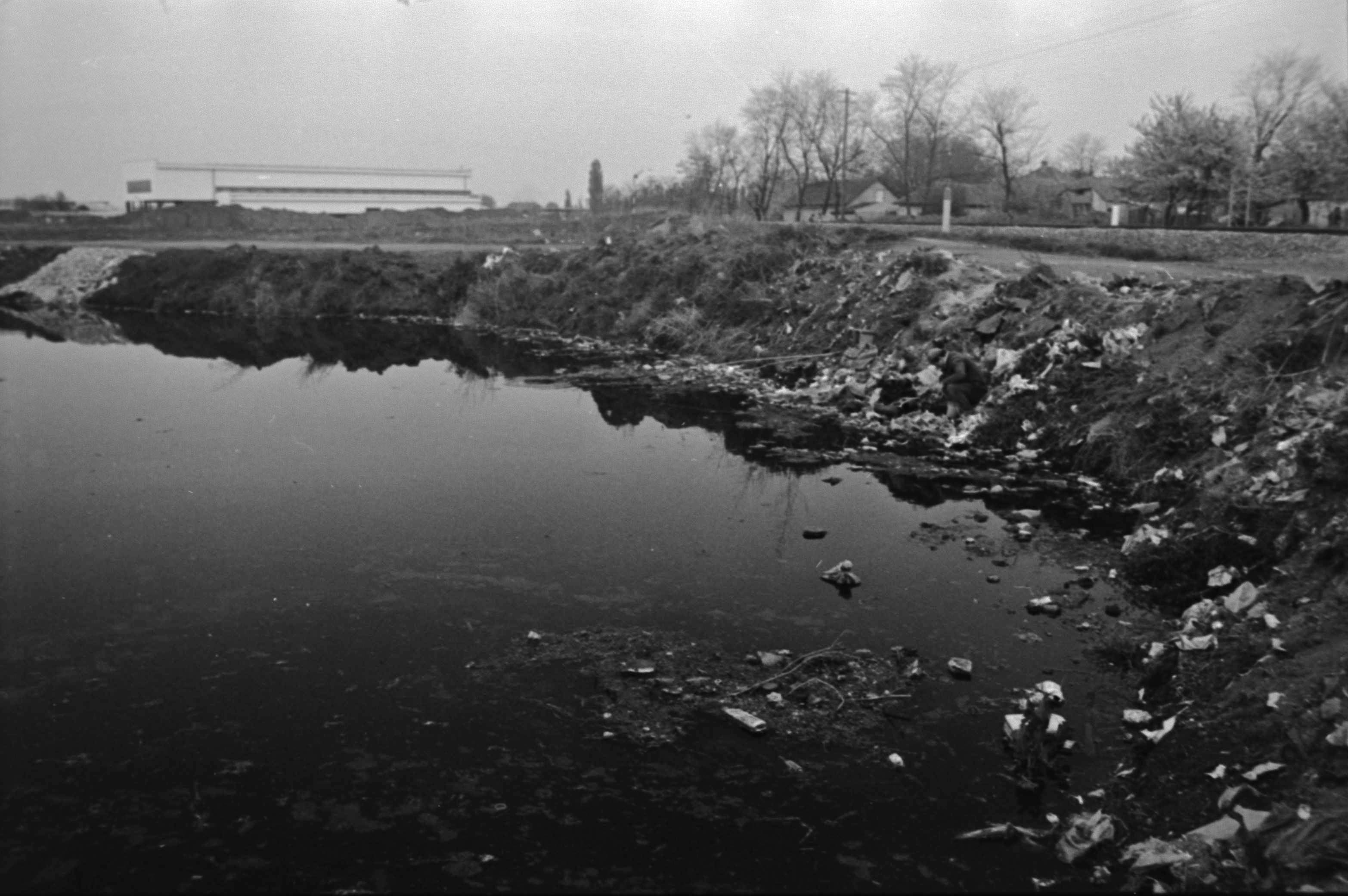bager
(Place, tavern, firm, Yugoslavia)
The word, when spelt lowercase, means a backhoe, i.e. a machine with that big ladle in front, to dig and transport soil, mostly into a truck which would carry it away. Spelt propercase, it's a little lake we had in the neighborhood, on the other side of the railroad. It was dug by such machines, when there was a brick plant in the neighborhood. Such places exist pretty much everywhere - any decent village would have a brick plant of its own, and it would serve as long as the village is built. The soil here is rich, greasy and black, but two shovels deep the clay begins, and that's a perfect clay for brick. They dig perhaps six or ten meters deep and then it becomes hard to go any deeper, because it either turns muddy at that depth, or it's simply too high to carry out. So they dig wider.
There's actually yet another such pit, perhaps a couple hundred meters long and a hundred wide, with the railway the hypothenuse of the triangle, on the other side - the tips would meet where railway crosses our street (where Eva lives and where debelamačka was). Both pits were long abandoned when we were kids, the brick plant moved northside. The difference is that that pit had a big flat bottom and was perfect for football and bicycling in the summer and sleds in the winter - the angle of the wall in the corner was just perfect - but the Bager is where they hit a stream of underground water and it became a lake. Not a mountain type with clear water, this was always yellow from all that clay. And the swimming in it was often forbidden, because people would throw garbage in it, allegedly even dead horses, but that never stopped us in the summer. I think most of the summers between, say, 1967 and perhaps 1971 I went there with the guys from the street. We'd have a tractor tire and just have fun.
The side effect of the clay was that when the water evaporated off your skin, you could just draw a line on it, using a fingernail, and it would come bright clay-yellow against the tan.

This is, I think, in the eighties, when it became a landfill. More garbage.
By early eighties it became a landfill. While we were building the house, we already could ride our bikes over most of it, diagonally, though not quite, there was less than half of it with water still. It took until about mid nineties, when again it wasn't passable that way, because it overgrew with weeds. After 2010 there were a few buildings already - the furniture salon by the corner, an agricultural poisons and seeds shop by the railroad, a carwash on the other end. By 2016 it got filled - the other half of the furniture salon, Đuđa's son-in-law has an auto salon there and an apartment above it, thus being the only inhabitant on that side of the street. There's another car salon, some plant where they build tanks for ships, an indoor sports hall.
Meanwhile the other clay pit got also filled, but there's nothing there. I walked that way on 05-X-2023., there's just a bit of forest over it, the acacia grows wherever nobody mowes.
Mentions: january 1960., june 1960., 09-VI-1964., 20-VI-1968., 31-X-1969., 21-VI-1970., B, S & T, 19-VIII-1972., 01-XI-1973., 01-IX-1980., 24-V-1988., 03-IX-1990., 31-V-2001., 25-I-2011., 22-VIII-2015., 11-VIII-2017., 21-II-2020., 01-II-2021., 07-VI-2021., 01-VII-2021., 20-VII-2021., 04-X-2021., 13-II-2022., 05-V-2022., 22-III-2023., 05-X-2023., 30-IV-2024., debelaMačka, Đurđa Rođanović (Đuđa), Eva, in serbian